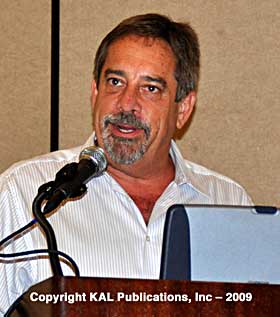What's changed in the last 5 years is you folks will be where the action is if alternative fuels are to gain traction in California. We, in California, have a long history of alternative fuels development. We have state policies — like them or not — that the rest of the country will be embracing as well. I think the time is right.

It is the Alternative Fuel and Technology Program. It is funded up to $120 million per year for 7 1/2 years. Even though the Legislature is still discussing the budget, the funding is currently intact. The statute provides funding to develop, produce, manufacture, and deploy alternative and renewable fuels, advanced vehicles, and vehicle technology. There is funding for job development and job training and this piece has become increasingly important with our unemployment situation in this state.
The purpose is to transform California's vehicle and fuel types.
For the next 2 years, there is $40 million allocated to co-fund a minimum of hydrogen fueling stations. These stations would be scheduled to the rollout of the OEM hydrogen vehicles as they're rolled out over the next 5-7 years.
$12 million for electric charging sites.
$2 million has been allocated for developing biodiesel and $4 million for biodiesel storage.
Natural gas— $8 million has been allocated for fueling stations.
$15 million will be allocated for workforce training and development.
We would like to work with you as partners and bring some money to get things started. We would like to develop infrastructure and commercial fueling locations for these alternative technologies.
The public made very definite behavioral changes with the high price of gasoline and diesel a year ago. Fuel has to be competitive with the price of gasoline. Here in California, we are hoping that the ethanol plants that were producing in California could be brought up with a commitment to go to different resources perhaps cellulosic, perhaps non-food, non-corn related. Those non-corn ethanol sources yield a lower greenhouse gas profile. I think there is an opportunity to reopen those facilities and they're not going to have to submit to a permit process which, as we know, can be lengthy in California. We would look for some of the production from those plants to go to the E85 market. Price is the key. If we could establish a mechanism to bring those plants back on and provide some support for that, we can get that started. We have half a million FFV vehicles in the state that could use ethanol. That is a hopeful thing across the state: to bring those plants back on-line and put those people back to work. If we can get our own ship in shape in California in terms of ethanol that would help us now and it would help us with low carbon credits in the future.
Trade magazine publishing featuring a “hometown paper” approach to industry news, events, and the people who make it all happen.